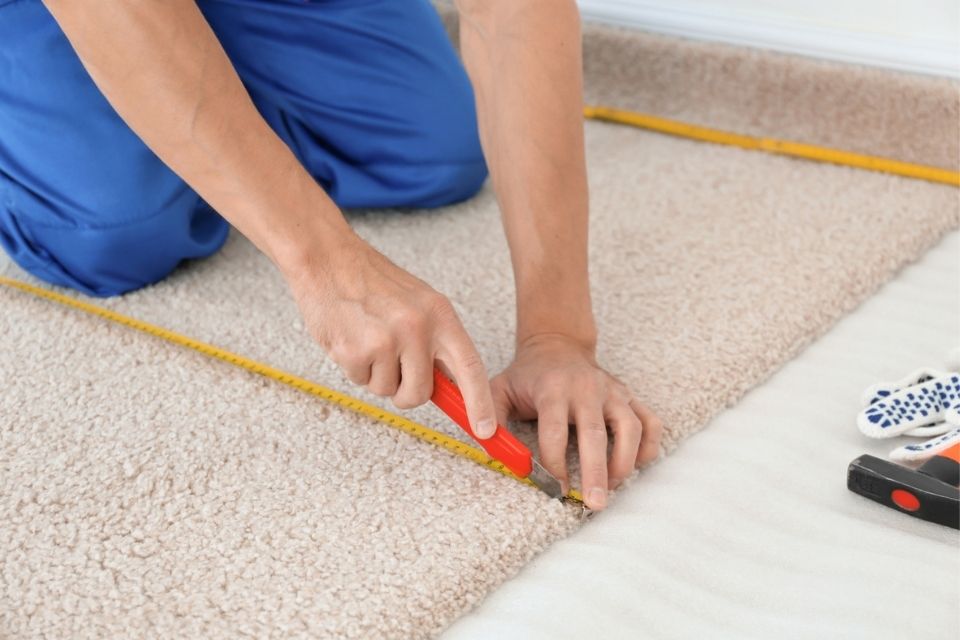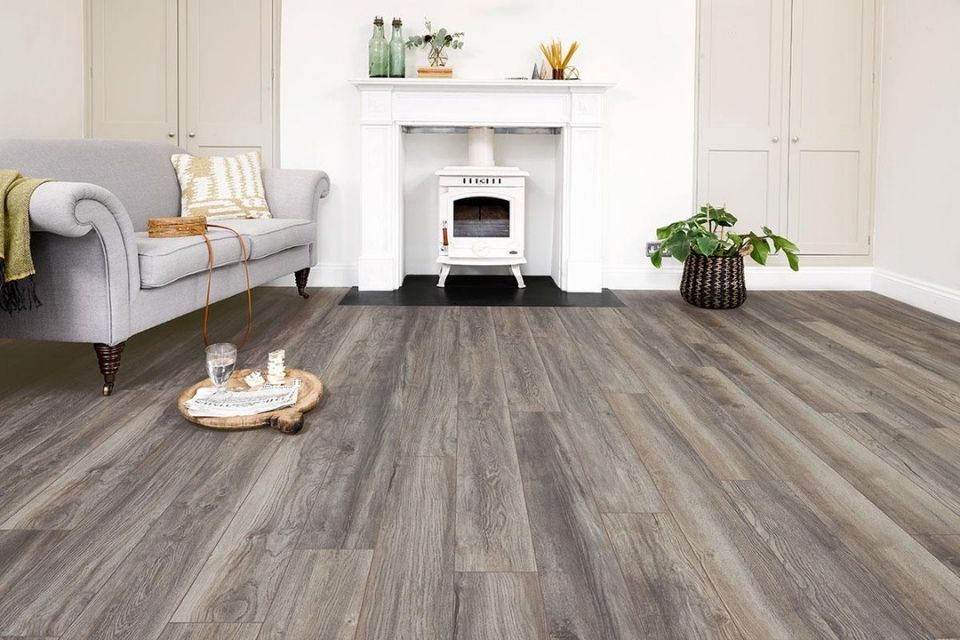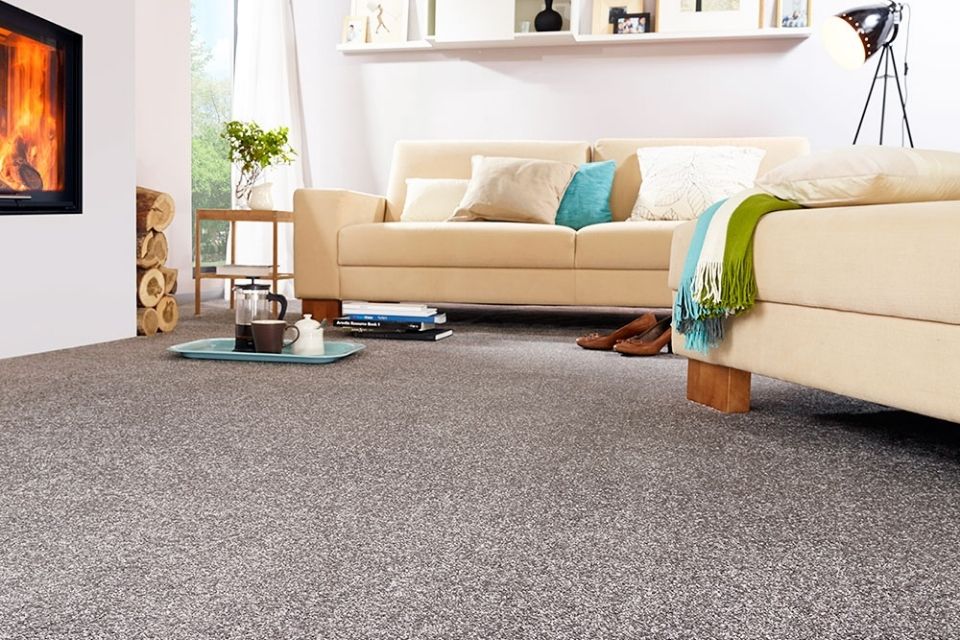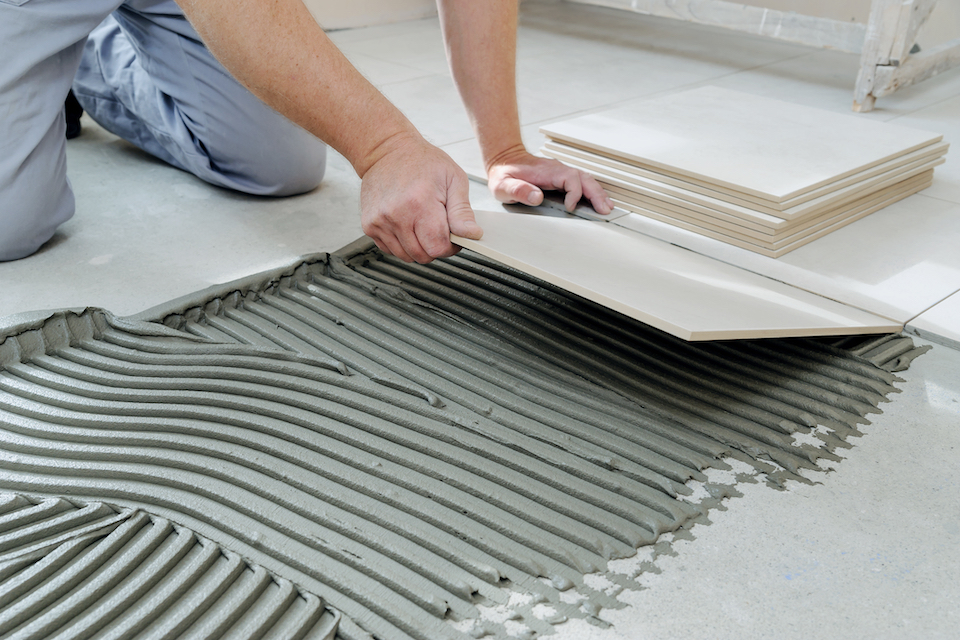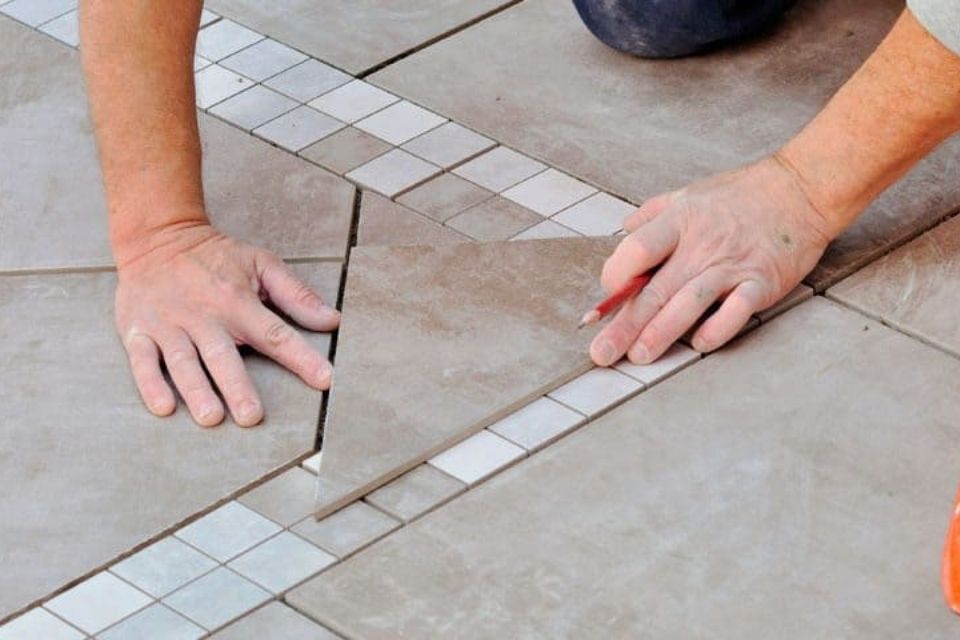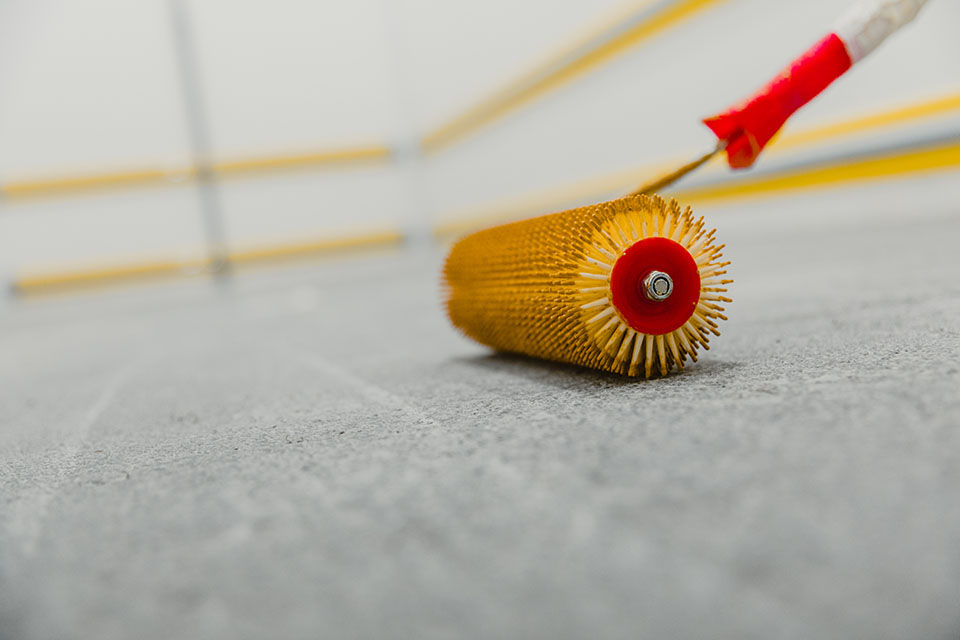Why Do I Need to Fit a New Carpet?
There are a number of reasons why you might want to install a new carpet. Below is a list of reasons why you may need to fit a new carpet at your home:
- Your old carpet is worn
- You are redecorating a room
- You are switching from another type of flooring to carpets
- You are looking for a change
- Your old carpet is outdated
How to Fit a Carpet Yourself
Below is our step-by-step guide on the best carpet fitting methods. Be sure to take the necessary preparation steps before attempting to fit the carpet.
See the lists below for all of the relevant tools and materials you'll need to complete the job.
Step 1
Lay out your carpet and ensure there is enough overlay on every single edge before you begin with the actual installation.
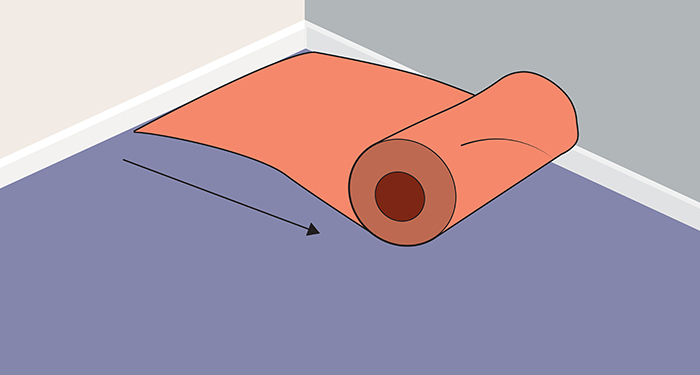
Step 2
Once you're happy with the positioning of your carpet, go over the area with both feet using a shuffling step action to get rid of any ripples or bumps.
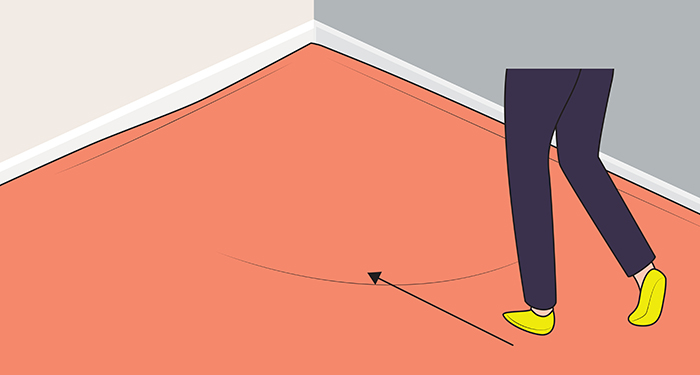
Step 3
At each corner, push the carpet as far as you can into the corner and cut the excess carpet vertically into the corner so that it's easier to push into place.
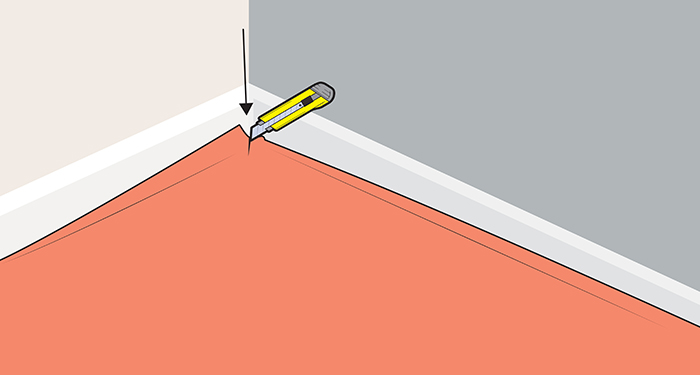
Step 4
Fold the carpet over and cut the excess down to 100mm ready for trimming.
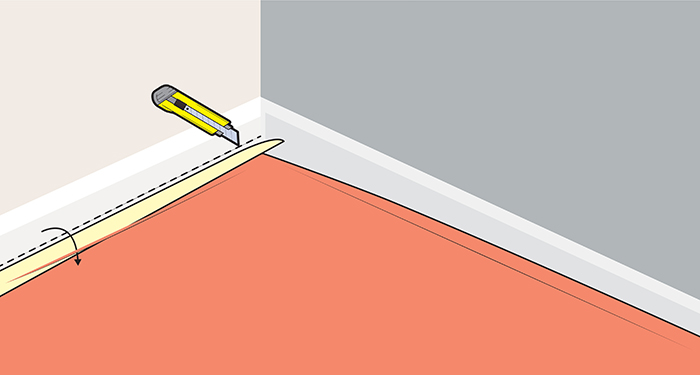
Step 5
Stretch the carpet by hooking it into the gripper and trimming it. Start in the corner that is diagonally opposite the doorway.
Use the carpet stretcher to hook the carpet onto the gripper for approximately 1m in each direction.
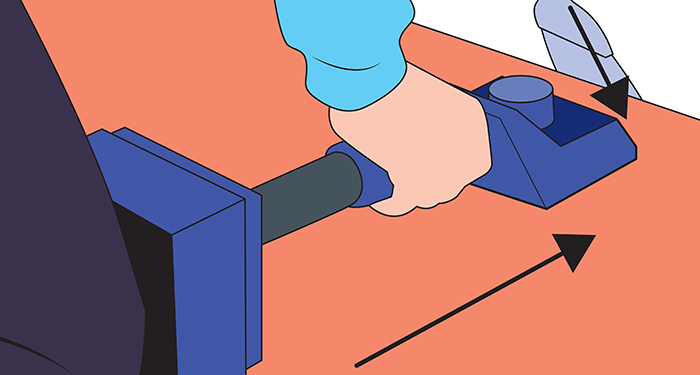
You'll need to apply some pressure downwards on the carpet stretcher and kick the padded end with your knee to apply some extra pressure. Tuck the carpet into the edge with a carpet chisel.
Step 6
On the longest side of the room, stretch the carpet into the opposite corner and use pressure to hook the carpet onto the gripper for approximately 1m.
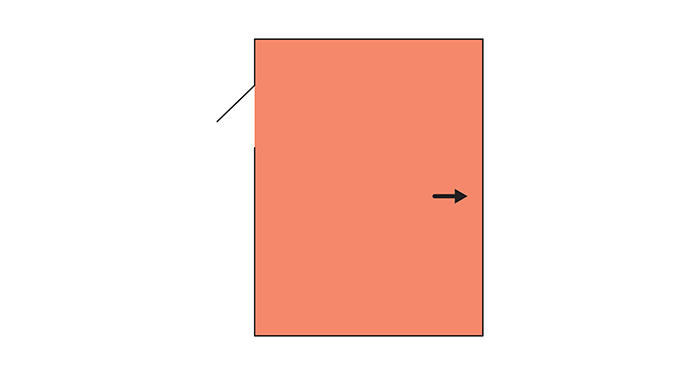
Step 7
Staying on the longest side, you then want to hook the carpet onto the grippers between the two corners.
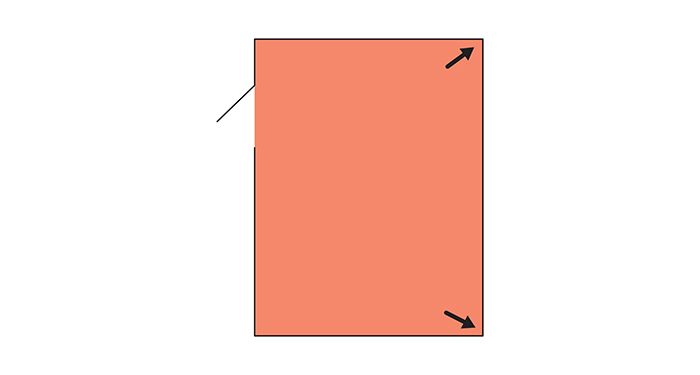
Step 8
Now move to the smallest wall of the room and stretch the carpet into the opposite corner where you started, using the same method.
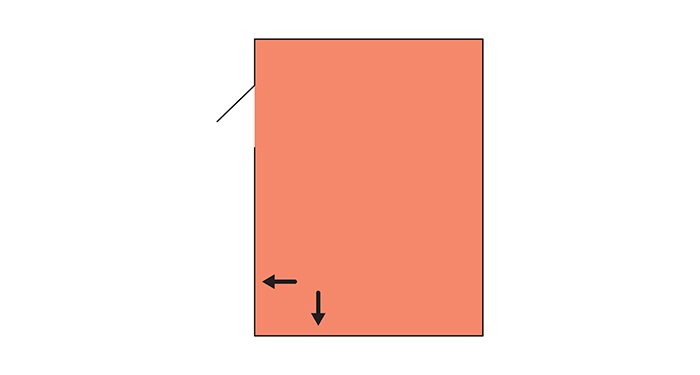
Once the corner is hooked, work along the rest of this wall and hook the carpet onto the gripper.
Step 9
Then move onto the corner that is diagonally opposite the corner you started in and repeat those same steps.
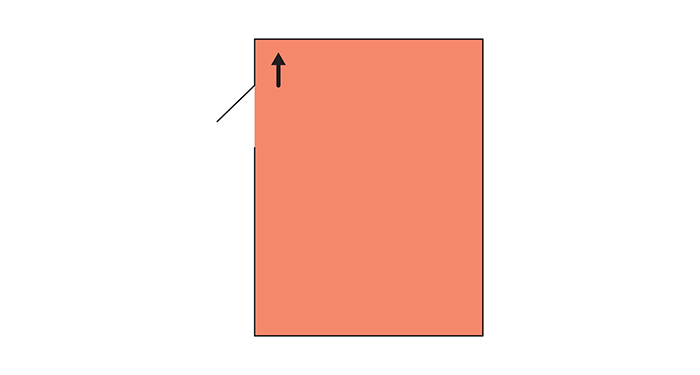
Continue these same steps along the remaining long side of the room and the remaining short side of the room. Once you've done this, your carpet should be fully hooked onto the grippers.
Step 10
To trim the carpet, fold it back on itself and crease it so that it's tight against the skirting board. Use a utility knife with a sharp blade to cut the carpet backing along the folded edge.
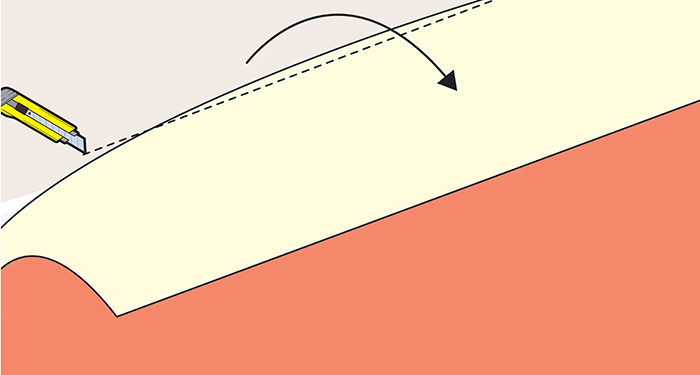
Step 11
Once the carpet is trimmed, use a carpet tucker to tuck the edge into the gap between the skirting board and the carpet gripper.
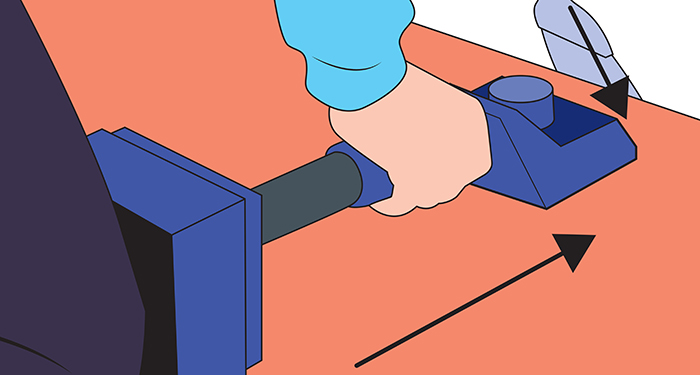
Repeat this process all across the length of the room until everywhere is trimmed and tucked apart from the doorway.
Step 12
In the doorway, trim the carpet around the architrave and doorframe. Allow the carpet to slightly overlap the threshold bar.
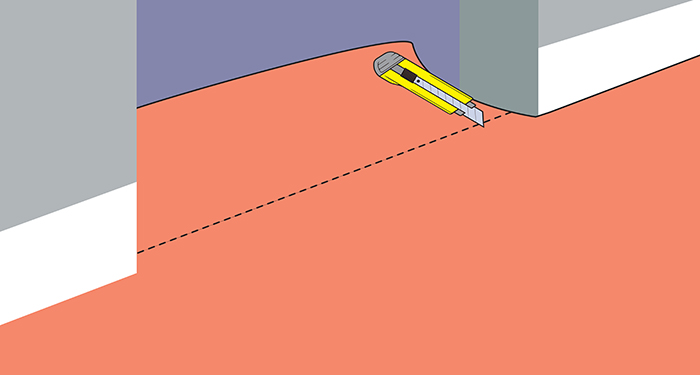
Cut the carpet so that it ends just before the middle of the threshold bar. Use a cutting board under the carpet so that you don't damage the threshold bar as you cut it.
Step 13
Once it's cut, use a tucker to tuck the edges into the threshold bar gap.
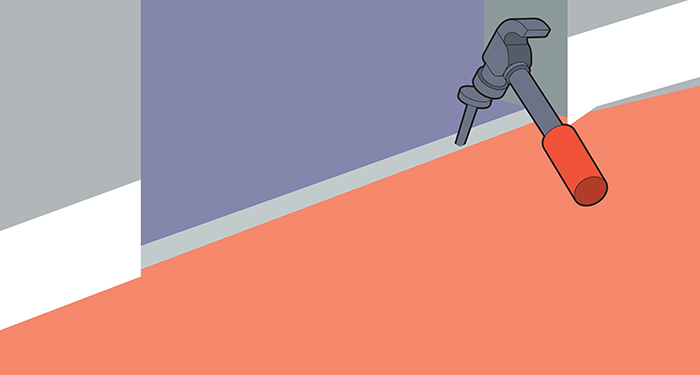
Tools to Fit a Carpet
Below is a list of the tools you will need for fitting a carpet.
- Sweeping brush
- Vacuum cleaner
- Tape measure
- Hammer
- Staple gun
- Carpet stretcher
- Carpet tucker
- Utility knife or trimming knife
- Flat scraper
- General purpose snips
Safety Equipment to Fit a Carpet
Below is a list of the recommended safety equipment you will need to fit a carpet.
- Knee pads
- Heavy-duty gloves
- Eye goggles
Materials to Fit a Carpet
The list below highlights all of the materials you will need to lay a carpet.
- Carpet
- Carpet underlay
- Carpet grippers
- Masking tape
- Staples
- Threshold bar
- Cutting board/scrap timber
How to Prepare for Carpet Fitting
You will need to take the steps below to prepare for fitting your carpet:
- Clear the room out, removing any furniture.
- Give the floor a thorough sweep or vacuum.
- Check the floor surface for any protruding nails or screws, holes, broken floorboards, or other defects. These should be rectified before you lay your new carpet.
- If your floor is uneven or damaged, you may need to level it.
- Measure the room to work out how much carpet you will need. Add a minimum of 10cm extra length to accommodate for trimming and fitting.
- Fit carpet grippers around the room's perimeter. Be sure to wear gloves when doing this. The angled side of the gripper must face to skirting board. Leave a gap of 7-8mm between the gripper and the skirting board.
- Lay out your underlay. Use masking tape to fix it in place and also tape the pieces together. Use a staple gun to stick the underlay to the floor even further.
Types of Carpet
There are several different types of carpet to choose from for your home, and each type comes with a unique style.
Below is a list of the different types of carpet and some information about each of these styles.
Frieze Carpeting
Frieze carpeting is a type of cut pile carpeting. The yarn on frieze carpets is twisted, giving it a unique curly look.
It's very soft and durable, and due to its texture, it's very easy to hide seams.
Due to its thickness, it can be tricky to give it a proper clean – dirt and debris can easily sink into the fibres.
Plush Carpeting
Plush carpeting is also a cut pile style of carpeting. Instead, the carpet loops are all cut to the same length to create a smooth, level surface.
This carpet type is soft and durable and comes in a wide range of colours.
Shag Carpeting
Although this type of carpeting is less common in modern homes, it still makes for a very comfortable and unique style.
It's very similar to frieze carpeting, only it's thicker, bulkier, and has a deeper pile. It's very comfortable and durable and can easily hide seams.
However, it can be difficult to clean and can also be difficult for people who use strollers or wheelchairs due to the thickness of the texture.
Level Loop Carpeting
Level loop carpeting is a loop style of carpeting. All of the loops are the same height to create an even surface.
This type of carpeting is extremely durable but not very comfy or cosy. It's mostly found in office settings or areas with high traffic.
Berber Carpeting
This is another loop style of carpeting, but the loops tend to be all different lengths, creating a slightly cosier surface.
This carpet type is durable and not too thick, so it's great for high traffic areas. It's not as soft as other carpet types, and due to the loops, it can get damaged by sharp objects or pet nails, so this is something to be aware of.
FAQs
Q: How do you rip up an old carpet?
A: To remove an old carpet, you want to begin by pulling the carpet up with pliers. If this doesn't work, use a utility knife to cut a small square out of a corner. This will allow you to grab hold of the carpet and pull it up.
Continue to pull it up along the entire length of the wall. Slice the carpet into sections as you go along and roll it up to make it easier to dispose of.
Continue this process across the entire length of the carpet until all the carpet has been removed.
Q: How long does it take to install a carpet?
A: Depending on the room's size and shape, you can usually complete a carpet installation within a day. However, some larger or more difficult jobs could take 2-3 days to complete.
Q: How do you measure stairs for carpet?
A: You will need to measure the number of stairs, the tread and rise, and the stair widths. This will allow you to work out how much carpet is needed to cover every step.
Always add 10% to your calculations when ordering carpet for your stairs.
Q: How do I know if my carpet needs to be replaced?
A: There are several signs that you can look out for that will indicate you are ready for a new carpet. Below is a list of things that may indicate a new carpet is needed:
- Visible stains
- Increase in allergy symptoms
- Visible wear and tear
- Rips
- Coming away from the walls
- Uneven
- Ripples, bubbles, or wrinkling appearing
Q: How often should I clean my new carpet?
A: When the carpet is first laid, it will most likely shed for a while. This is a normal process, and you will need to keep on top of vacuuming. Daily vacuuming for the first week is recommended.
Then you should move on to vacuuming at least once per week to keep on top of keeping it clean. This will stop dirt from becoming ground into the carpet.

